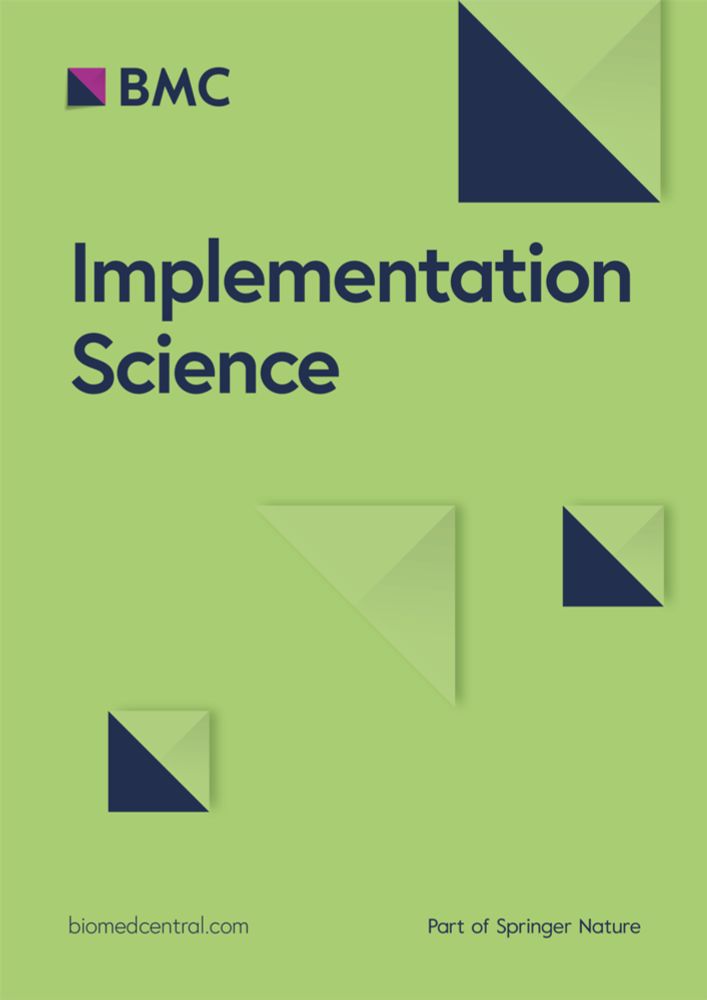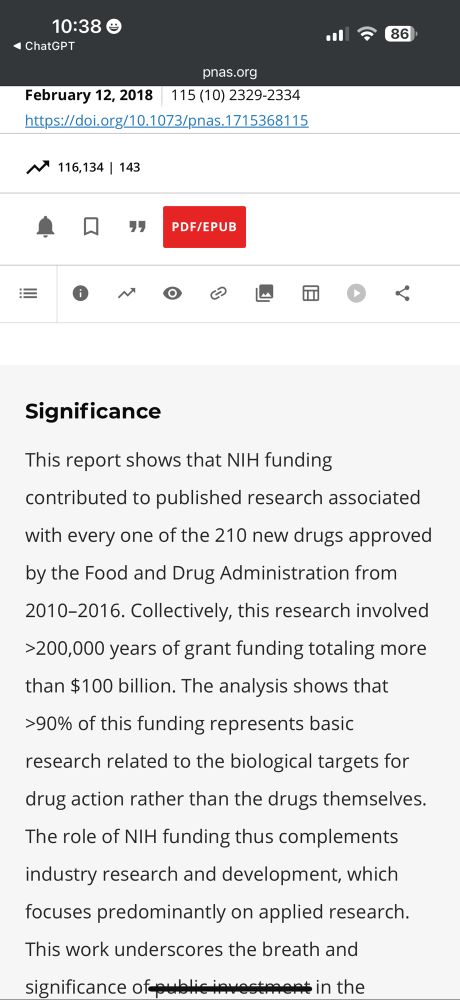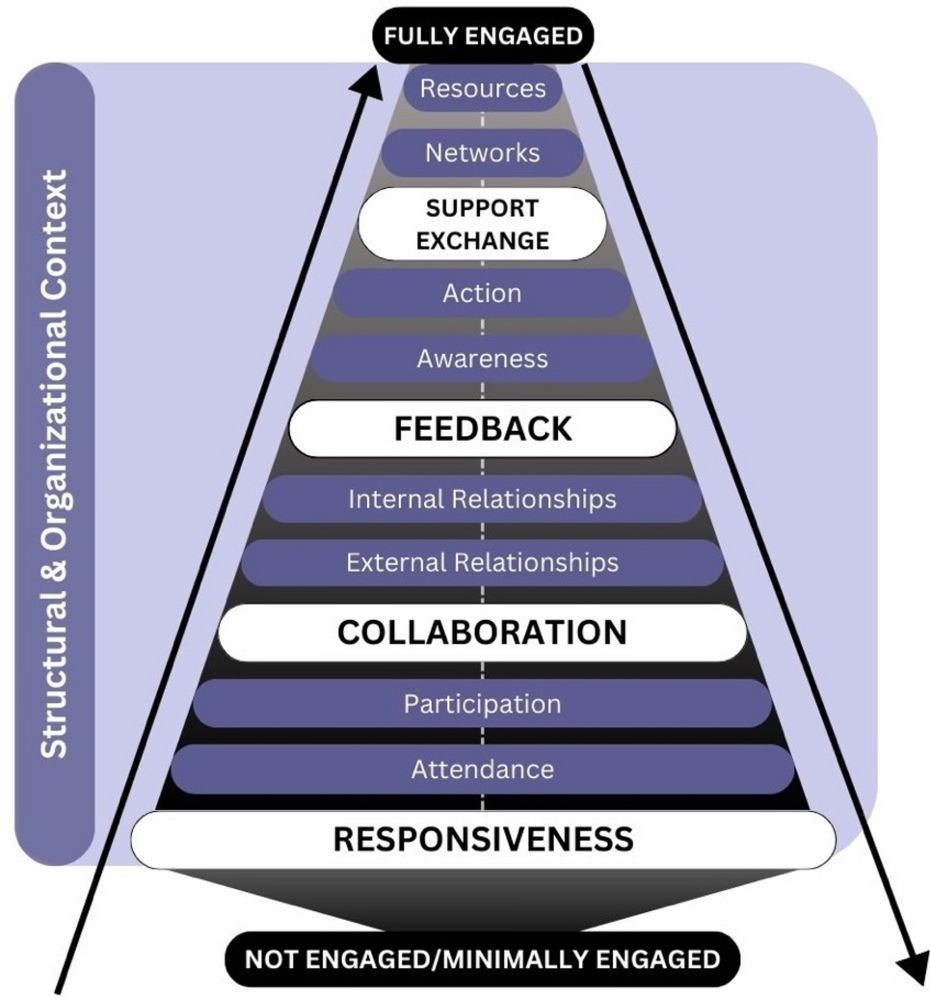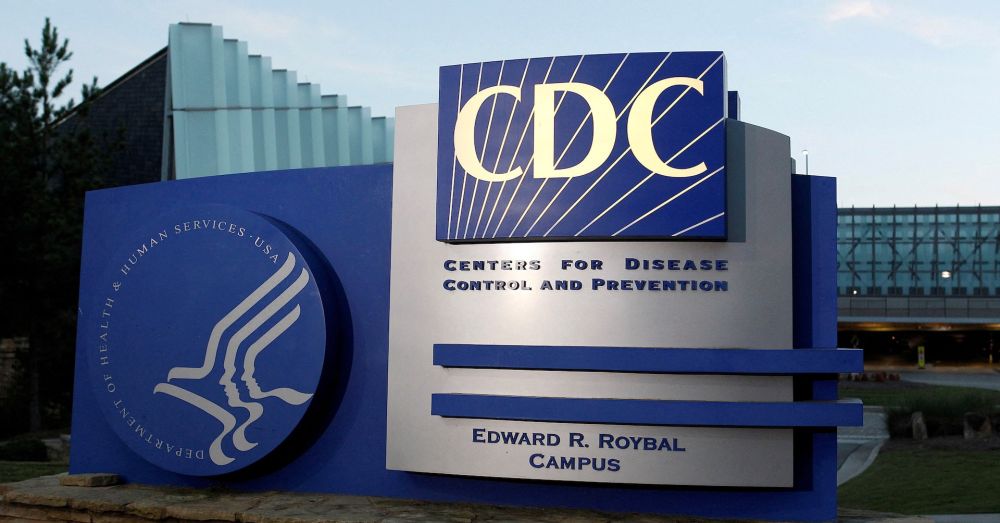
Implementation of state health insurance benefit mandates for cancer-related fertility preservation: following policy through a complex system - Implementation Science
Background A myriad of federal, state, and organizational policies are designed to improve access to evidence-based healthcare, but the impact of these policies likely varies due to contextual determinants of, reinterpretations of, and poor compliance with policy requirements throughout implementation. Strategies enhancing implementation and compliance with policy intent can improve population health. Critically assessing the multi-level environments where health policies and their related health services are implemented is essential to designing effective policy-level implementation strategies. California passed a 2019 health insurance benefit mandate requiring coverage of fertility preservation services for individuals at risk of infertility due to medical treatments, in order to improve access to services that are otherwise cost prohibitive. Our objective was to document and understand the multi-level environment, relationships, and activities involved in using state benefit mandates to facilitate patient access to fertility preservation services. Methods We conducted a mixed-methods study and used the policy-optimized exploration, preparation, implementation, and sustainment (EPIS) framework to analyze the implementation of California’s fertility preservation benefit mandate (SB 600) at and between the state insurance regulator, insurer, and clinic levels. Results Seventeen publicly available fertility preservation benefit mandate-relevant documents were reviewed. Interviews were conducted with four insurers; 25 financial, administrative, and provider participants from 16 oncology and fertility clinics; three fertility pharmaceutical representatives; and two patient advocates. The mandate and insurance regulator guidance represented two “Big P” (system level) policies that gave rise to a host of “little p” (organizational) policies by and between the regulator, insurers, clinics, and patients. Many little p policies were bridging factors to support implementation across levels and fertility preservation service access. Characterizing the mandate’s functions (i.e., policy goals) and forms (i.e., ways that policies were enacted) led to identification of (1) intended and unintended implementation, service, and patient outcomes, (2) implementation processes by level and EPIS phase, (3) actor-delineated key processes and heterogeneity among them, and (4) inner and outer context determinants that drove adaptations. Conclusions Following the midstream and downstream implementation of a state health insurance benefit mandate, data generated will enable development of policy-level implementation strategies, evaluation of determinants and important outcomes of effective implementation, and design of future mandates to improve fit and fidelity.
Study led by Irene Su, M.D. - EPIS framework illustrates when a legislative health policy is passed, it winds its way through a maze of insurance regulation, health insurer benefit design, and how health care organizations and patients navigate these structures and processes. doi.org/10.1186/s130...
10.10.2025 04:18 — 👍 0 🔁 1 💬 0 📌 0

Testing a multi-faceted strategy to support the implementation of ACEs screenings in primary care: results of a stepped-wedge pilot trial - Implementation Science Communications
Background Adverse Childhood Experiences (ACEs) screenings are increasingly being used in primary care clinics to identify toxic stress and potential trauma in children. ACEs are negative life events (e.g., violence exposure) occurring before age 18, that can increase health risks when unaddressed. However, we lack evidence on the impact of ACEs screenings and how they can be feasibly implemented in community-based clinics. We partnered with federally qualified health clinics to test the impact of a multifaceted implementation strategy on ACEs screening reach and mental health referrals for children ages 0–5. Methods We conducted a Hybrid Type 2 pilot trial using a stepped-wedge design (2021–2024). Reach data was measured as the proportion of eligible children screened for ACEs, with data collected from Electronic Health Records. We also assessed the percentage of mental health service referrals among all eligible children. Study clinics (n = 3) switched from no ACEs screenings (control) to implementing ACEs screenings supported by the multi-faceted ACE implementation strategy (intervention). The tested strategy comprised personnel training (e.g., trauma-informed care), integrated technology, team-based screening workflows, and ongoing care team implementation support. Additional clinics (n = 2) implemented ACEs screenings as usual without the strategy and served as additional comparison sites for exploratory analyses. Log-binomial and robust Poisson regression models examined differences in screening reach and referrals and were adjusted for site and patient race. Results Screening reach rates increased in the intervention period, from 0.0% of patients screened during control to 11.2% screened during intervention. Mental health service referrals increased from 0.4% at control to 7.2% during the intervention, resulting in a risk difference (95% confidence interval) of 6.9% (6.0%, 7.7%). For both the reach and referral outcomes, risk differences were significantly greater for 18-to-60-month-old patients than for patients under 18-months-old. Discussion Healthcare policy efforts promoting ACEs screenings in primary care are commendable. We found that a multi-faceted implementation strategy informed by partners and designed to support ACEs screenings in community-based clinics was feasible. However, its impact was attenuated by policy requirements, clinics’ capacity to add ACEs screenings to strained workflows, and multiple impactful outer-context events related and unrelated to the COVID-19 pandemic. Trial registration Trial # NCT04916587 registered at clinicaltrials.gov on June 4, 2021, https://clinicaltrials.gov/study/NCT04916587
Adverse childhood experiences (ACES) are linked to lifespan physical & mental health problems. This study led by Monica Perez-Jolles improved ACES screening outcomes using a multi-faceted implementation strategy. @ucsd-disc.bsky.social @accordsresearch.bsky.social link.springer.com/article/10.1...
08.10.2025 00:07 — 👍 4 🔁 1 💬 0 📌 0
 07.10.2025 18:38 — 👍 0 🔁 0 💬 0 📌 0
07.10.2025 18:38 — 👍 0 🔁 0 💬 0 📌 0
The University of Glasgow groundspeople are going to be quite annoyed when they come in to work tomorrow...
01.10.2025 17:59 — 👍 2347 🔁 580 💬 89 📌 127


San Diego #NoKings
14.06.2025 18:03 — 👍 9799 🔁 2213 💬 111 📌 189

📢 Join us for the June EPIS Office Hours! We’re excited to welcome Dr. Marisa Sklar as our guest host this month! Please note: June’s office hours will be held at only one time point (8-9 am PT) drop by to ask questions and connect with an EPIS expert. #EPISFramework
05.06.2025 21:59 — 👍 1 🔁 2 💬 1 📌 0

It’s @arc-southlondon.bsky.social Implementation Science Masterclass time @kingscollegelondon.bsky.social Big thanks to our colleagues joining from all over the world to share their expertise including @drgregaarons.bsky.social @grahammoore.bsky.social and many more 🙏
02.06.2025 16:50 — 👍 9 🔁 2 💬 1 📌 1
Love Fog City
Diner. Glad that I went last fall when I was at a conference in SF. Will be missed...
03.06.2025 01:04 — 👍 1 🔁 0 💬 0 📌 0
I am so looking forward to this fun event with creative ways to communicate about implementation science!
01.06.2025 09:34 — 👍 4 🔁 1 💬 0 📌 0

Mine and hope for more
12.05.2025 10:25 — 👍 2 🔁 0 💬 0 📌 0
Improving #implementation is key to overcoming #policy failure, write CEI experts Jane Lewis & Dr Robyn Mildon in a commentary for @schoolforgovt.bsky.social. #impsci #evidence #research #practice #scaling
12.05.2025 07:24 — 👍 6 🔁 5 💬 0 📌 0
please share with your networks@ucsd-disc.bsky.social @implementsci.bsky.social @implementeic.bsky.social @impact-swiss.bsky.social @washu-dandi.bsky.social
08.05.2025 22:00 — 👍 4 🔁 1 💬 0 📌 0

Implementation science grant terminations in the United States - Implementation Science
Please see our editorial led by @rsbeidas.bsky.social on the impact of US federal grant terminations on the field of implementation science in the US and globally. imphttps://implementationscience.biomedcentral.com/articles/10.1186/s13012-025-01434-7
08.05.2025 21:26 — 👍 9 🔁 8 💬 0 📌 1
So important to have strong, intelligent, caring and courageous women role models. Especially now when government forces try to minimize the roles and value of women in society and life.
05.05.2025 03:57 — 👍 2 🔁 0 💬 0 📌 0

Hey! We are not at war!!
29.03.2025 00:14 — 👍 1 🔁 1 💬 0 📌 0
BREAKING UPDATE:
Wisconsin Attorney General Josh Kaul is suing Elon Musk to block his $1 million bribes to voters.
www.pbs.org/newshour/pol...
29.03.2025 00:04 — 👍 3411 🔁 951 💬 160 📌 55
@mcuban.bsky.social this is a long shot but my account is small & the losses to science are too great to not ask for favors. Please consider getting the word out about AHRQ & NIH funding cuts. We are losing a generation of scientists & American innovation. Thanks! 🤞🙏
21.03.2025 22:46 — 👍 34 🔁 13 💬 0 📌 1
🙏 Shameless ask: It’s my birthday. Scientists, please call your Congress peeps & tell them why AHRQ & NIH are critical to curing cancer, treating & preventing substance use, ensuring healthcare access in rural America, the list goes on. Without real #AHRQ & #NIH funding we will be a sicker country.
21.03.2025 22:22 — 👍 4 🔁 1 💬 2 📌 0

From 2010 to 2016 (latest data I have ), NIH research contributed to EVERY drug approved by the FDA
22.03.2025 10:44 — 👍 32259 🔁 8558 💬 713 📌 294
Sources inside NIH say DOGE is at one of their buildings right now.
If you have additional info, i’m marisakabas.04 on Signal.
19.03.2025 16:21 — 👍 1265 🔁 408 💬 20 📌 27
Guidance on integrating mixed methods in MH research has been available for years (Palinkas et al 2013). link.springer.com/article/10.1.... Glad to see this latest article reminding us of its benefits and challenges.
28.02.2025 23:35 — 👍 5 🔁 2 💬 0 📌 0

👋 In case you missed it! February's DISC Seminar on "Team functioning and Implementation of Innovations in Healthcare and Human Service Settings" is now available on the DISC Website!
Special thanks to Dr. Elizabeth McGuier for a great presentation! 👏
🔗 youtu.be/I-qI5faiSaI
28.02.2025 00:58 — 👍 4 🔁 1 💬 1 📌 0
Research Program Manager at The Ottawa Hospital Research Insitute
REPPP is a partnership between the Department of Justice, Ireland and
the School of Law at the University of Limerick, contributing evidence to support decision making for youth crime policy, programmes and practice
Official Bluesky account of #RolandGarros | 18 May - 7 June, 2026
http://rolandgarros.com
Clinical psychologist | Implementation support practitioner | PhD candidate in implementation science| Norwegian Centre for violence and traumatic stress studies (NKVTS)| Board member of the European Implementation Collaborative (EIC)
Proudly Representing New Jersey’s 10th Congressional District
Resisting & standing up! 💙🇺🇸
I’m here for the resistance only! (If some cool artwork or animal videos are in the mix, OK.)
No DMs! I will not buy anything from you or donate to any individuals, so do not follow me if those are your aims.
Research Fellow | National Centre of Implementation Science (NCOIS), Newcastle Australia |
https://www.newcastle.edu.au/profile/nicole-nathan
U.S. Senator from New Jersey.
The Centre for Evidence and Implementation (CEI), is dedicated to using the best evidence in practice and policy to improve the lives of children, families and communities facing adversity. www.ceiglobal.org
Mom, wife, daughter, and loving but distracted friend. U.S. Senator for Minnesota. Prefers window seats, donuts and MN beer (all together when possible) ✈️ 🍩🍺
youth mental health & implementation science | University of Washington 25’🌻 | 📸 & 💃🏻enthusiast
Entrepreneur
Costplusdrugs.com
⚡ Sell your Teslas, dump your stock, join the picket lines.
⚡ Hurting Tesla is stopping Musk.
⚡ Stopping Musk will help save lives and our democracy.
Join a peaceful protest, organize your own and learn more about Musk and DOGE at TeslaTakedown.com
journalist / founder @ thehandbasket.co
email: MKwrites4000@proton.me
signal: https://signal.me/#eu/VssgH88q6WQu7MtH5wF-08JdgWh4iAPWD13eXiOcXQNGdZUXijJBZInD-UtLJKFG
venmo: venmo.com/u/Marisa-Kabas
ko-fi: https://ko-fi.com/marisakabas
Founded in 2019. | Website https://impact-dph.unibas.ch/ | YouTube channel @ImplementationScienceNetworkCH | IMPACT repository https://impact-dph.unibas.ch/repository/ #impsci #IMPACT-Swiss
Mastodon users follow: @impact-swiss.bsky.social@bsky.brid.gy
I dream of a world without the stigma of #MentalHealth & an #Academia where #disabilities are seen as a hidden strength. Let's change everything! #PublicSpeaker
#BrownSPH MPH Student
Husband, Father and grandfather, Datahound, Dog lover, Fan of Celtic music, Former NIGMS director, Former EiC of Science magazine, Stand Up for Science advisor, Pittsburgh, PA
NIH Dashboard: https://jeremymberg.github.io/jeremyberg.github.io/index.html
Professor, UW Biology / Santa Fe Institute
I study how information flows in biology, science, and society.
Book: *Calling Bullshit*, http://tinyurl.com/fdcuvd7b
LLM course: https://thebullshitmachines.com
Corvids: https://tinyurl.com/mr2n5ymk
he/him



 07.10.2025 18:38 — 👍 0 🔁 0 💬 0 📌 0
07.10.2025 18:38 — 👍 0 🔁 0 💬 0 📌 0













